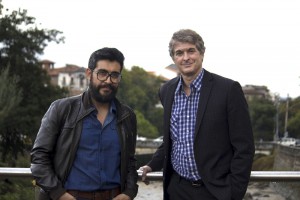XIII BIENNALE OF CUENCA
IMPERMANENCIA Mutable Art in a Materialist Society
Venues: Casa de las Posadas, Museo Municipal de Arte Moderno, Museo de la Ciudad, Casa de los Arcos, Salón del Pueblo, Proceso /Arte Contemporáneo, Museo de las Conceptas, Museo Pumapungo, Museo de la Medicina, Colegio Benigno Malo, Alianza Francesa, Cámara de Industrias, Plaza Chaguarchimbana.
Curatorial concept
For most of its recorded history, an essential quality of visual art has been the effort expended to prolong its existence. If an artwork was deemed truly important, then the responsibility fell to its owners or custodians to ensure that it was safely conveyed from one generation to the next; failure to do so could only be rationalized by calamity on the scale of war or conflagration. Whether mounted to the wall of a church, hung in the private quarters of a patron of the arts, or safely tucked away in hermetically sealed crate locked inside a Swiss vault, an absolutely key aspect of art’s material and symbolic value has always been its boundless capacity to compel us to insulate it from the ravages of time, a state of permanence about we, the self-same viewers whose unbroken gaze of adoration keeps their reputation pulsing with life, can only speculate.
Artworks are far from the only things that are designed to endure. Humans build pyramids and monuments, banks and museums with walls, floors and ceilings of impressive solidity, partly because what we are made up of, primarily, are soft, pliable surfaces suspended in viscous fluids that can be plied and permeated with relatively little effort, so we require more protection (i.e., walls) than those species who are covered by a thick shell or coats of fur. In contrast to those secure walls surrounding us, the essential characteristics of human tissue require it to connect and sometimes merge with other tissue, so that dynamic structures can be interlinked, and even detach themselves later, and brought together again. Until quite recently, this essential mutability of form and matter, which defines us a life form, has not been a characteristic that we have tended to seek out in the art that we deemed most meaningful, but that is showing signs of change. Current developments in contemporary art that underscore its social applicability in favor of its monetization within a global marketplace seem to suggest a splintering of the global art community into two camps: those whose function is to speculate in art’s future profitability, and those who employ art as a tool to contemplate the planet’s status quo and suggest possible world views to be shared among our fellow habitants.
The XIII Bienal de Cuenca, Impermanencia, proposes to bring together a geographically and stylistically diverse group of artists who share an interest in mirroring the frailties and follies of human existence relative to our fundamentally fleeting existence. In doing so, the exhibition recognizes that the challenges of art-making, as compared to some of the greater obstacles in human existence, might seem minor and trivial for those not aware of its high stakes, in much the way that our species likely appears insignificant when measured against the entirety of the surrounding cosmos. And yet we make and appreciate art for deep, primordial, which sometimes includes the wish to have one’s name spoken long after one is no longer alive, but perhaps it is the art of the ineffable, the defenseless, and the transitory that speaks most eloquently to our condition as temporary, transient packets of gradually dispersing energy inside a cold, ever-expanding universe. In its emphasis on the viewer’s internal responsiveness to the works on view, the 13th Bienal de Cuenca also subtly challenges certain preconditions of ownership with respect to works of art, which in the final analysis are more the patrimony of all humankind than a single museum, state, or individual.
As a thematic concept, impermanence, also one of the guiding precepts of Buddhism, is increasingly characteristic of the lives we lead today, when art’s value seems less rooted in the precondition that its appearance be preserved intact a hundred or thousand years from now, and instead is increasingly defined by its ability to connect with us in the present, fleeting moment of our exchange with it, even if a week from now it has vanished without a trace. Such an approach requires that we consider the ways in which the preconditions of a materially driven life are more malleable and less predetermined than many of us can imagine. By freeing art from the requirement that it linger beyond what we retain in our memory, we may also be opening ourselves to experiencing art as a concrete expression of our refusal to cling in futility to that which was never really ours to begin with.


